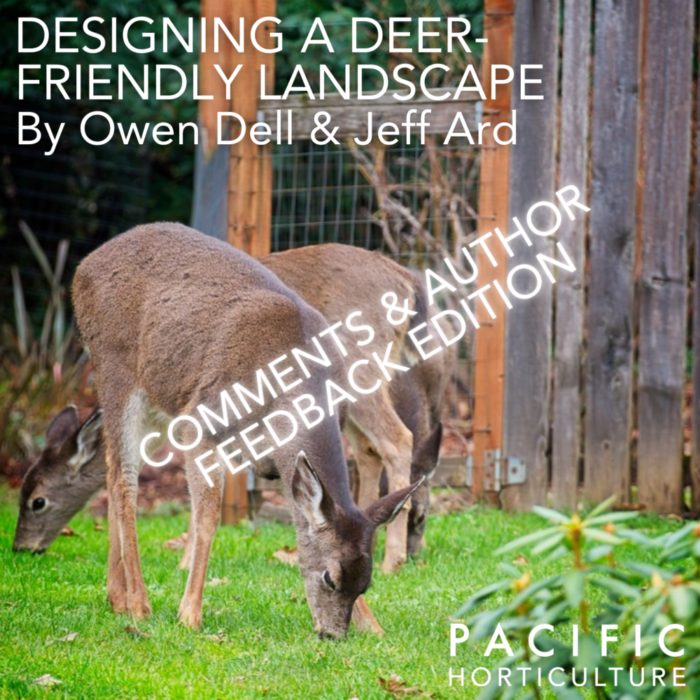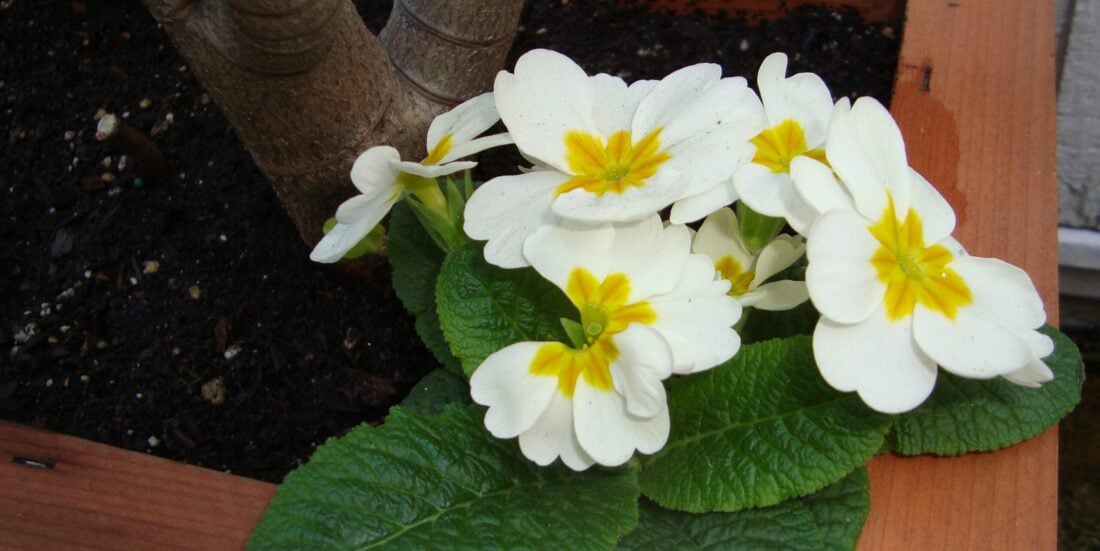

Contributor
- Topics: Archive

On a beautiful Saturday in late August, with fall in the air—along with smoke from raging wildfires in Eastern Washington—I opened my garden to fellow plant enthusiasts and Pacific Horticulture supporters.
As anyone who has risked revealing his or her personal landscape will tell you, it can be nerve wracking. What if guests don’t share my penchant for rusty artifacts, or my love of galvanized aluminum? A rain the previous week brought on the inevitable late-summer mildew on squash and tomato plants. And four months of record high temperatures and exceptionally dry conditions here in the Puget Sound area have left their mark on all our plantings.
But I needn’t have worried. Everyone was most gracious and kind (the delicious date bars and apricot cookies might have had something to do with that). I got the chance to thank everyone for continually supporting our work and we made a bit of money to bolster our always-limited budget. Dare I say it? It was fun!
I hope you enjoy the following snapshots from that day—think of it as a virtual walkabout:



Our garden lives much larger than the tiny city-sized plot it resides on. The space is divided into many different areas—dining, lounging, mixed borders (shade, sun, mixed), vegetable plantings, and workspace—the list goes on and on. We find the more we ask of our tiny lot, the more it expands to meet our expectations.
“Densely planted” (read: crammed) borders ebb and flow with seasonal highlights, including a remarkable Eucryphia ×nymansensis (at the right of the frame in the above left photo, and in full glory, above right) that is the undisputed queen of the early August garden. This year the 35+-foot multi-stemmed shrub bloomed about 3 weeks early; meaning all that was left of the show by the Open Garden event was a carpet of faded blossoms dried to an agreeable burnt orange, which blended nicely with the rest of the plantings and my collection of rusty artifacts. (And no, that wasn’t planned. Just a happy accident of the sort that gardens sometime hand us if we’re paying attention.)

Hamammalis ×intermedia ‘Arnold Promise’ and Corokia cotoneaster provide a study in contrast silhouetted against a pedestrian hedge of Thuja occidentalis in the entry garden.

Strong architectural elements are critical to keep this enthusiastic planting style from dissolving into a confused hodgepodge. This is likely the biggest takeaway lesson I’ve learned in the process of building this new garden. We chose a limited palette of rustic (and affordable) concrete, cedar, galvanized aluminum, river rock, and of course, rusty metal. There’s a great deal of freedom in limiting your materials and the end result is each element relates to the whole—and decision making is simplified.

Galvanized agricultural stock tanks create almost instant raised beds after drilling dozens of drainage holes in the bottom of each container. A large soil volume makes these plantings easy to maintain but I’m struggling with bringing the sterile topsoil we filled them with to life. I see a large load of manure in my not-to-distant future.

Gabions—essentially a metal cage filled with rocks—are a repeating motif throughout the garden. They contribute structure, seating, and an easy DIY retaining solution for changing levels.

Even though these plants have only been in the ground for a year Euphorbia rigida, Hylotelephium telephium, Nasella tenuissima, and a rhizomatous allium that I always forget the name of (A. senescens cross?) never even blinked in the course of a challenging growing season.

Cutflowers, vegetables, herbs, and fragrances of all sorts dominate high summer (and our dinner table!)



Putting the space above the ground plane in the garden to work not only softens the structures but you get beans, grapes, and peas!

Ours is a personality-driven landscape that suits us just fine. Built and furnished with quirky items, favorite and select plants, and lots of delicious flavors—it’s our personal playground and a refuge from an indoor life.











Responses